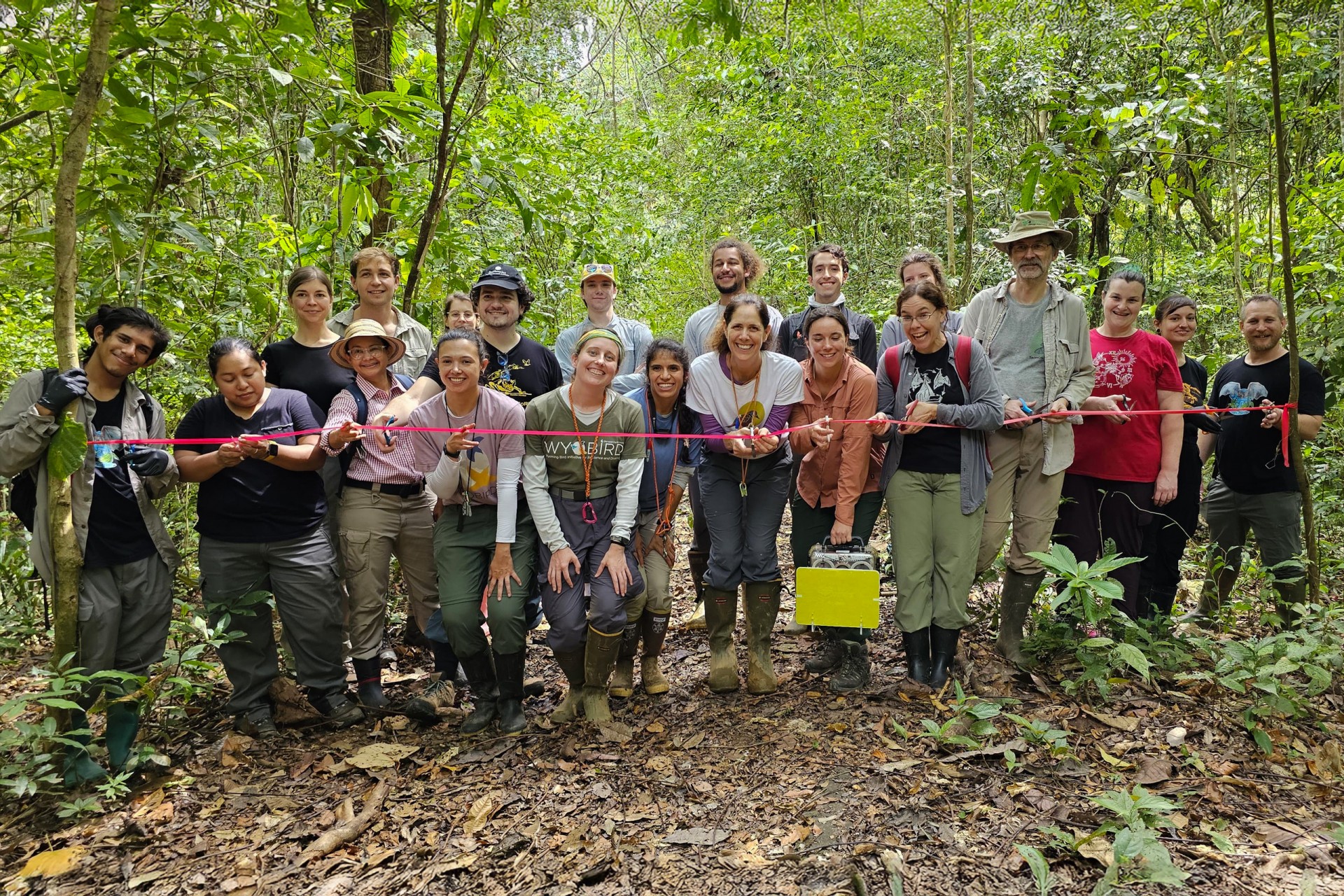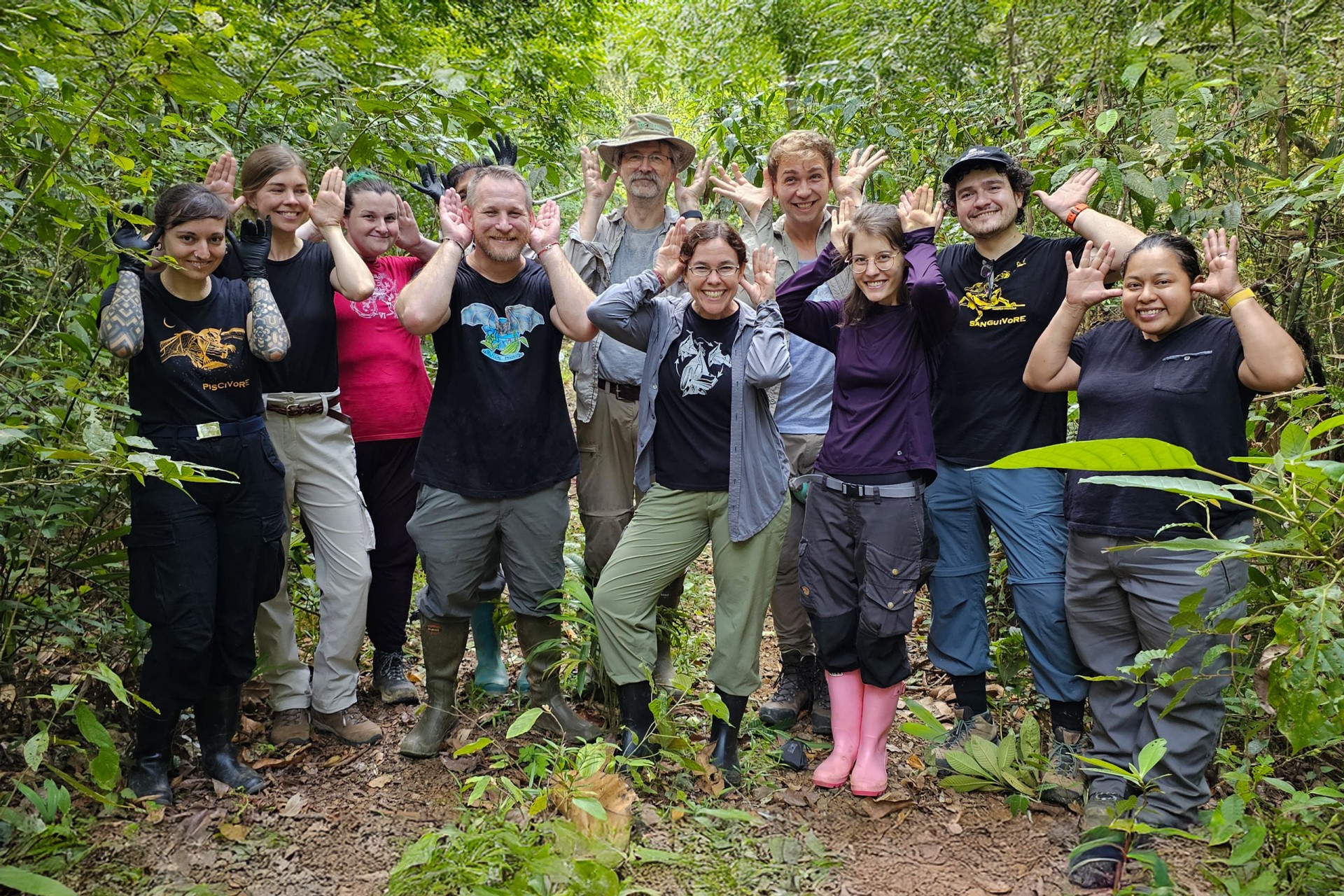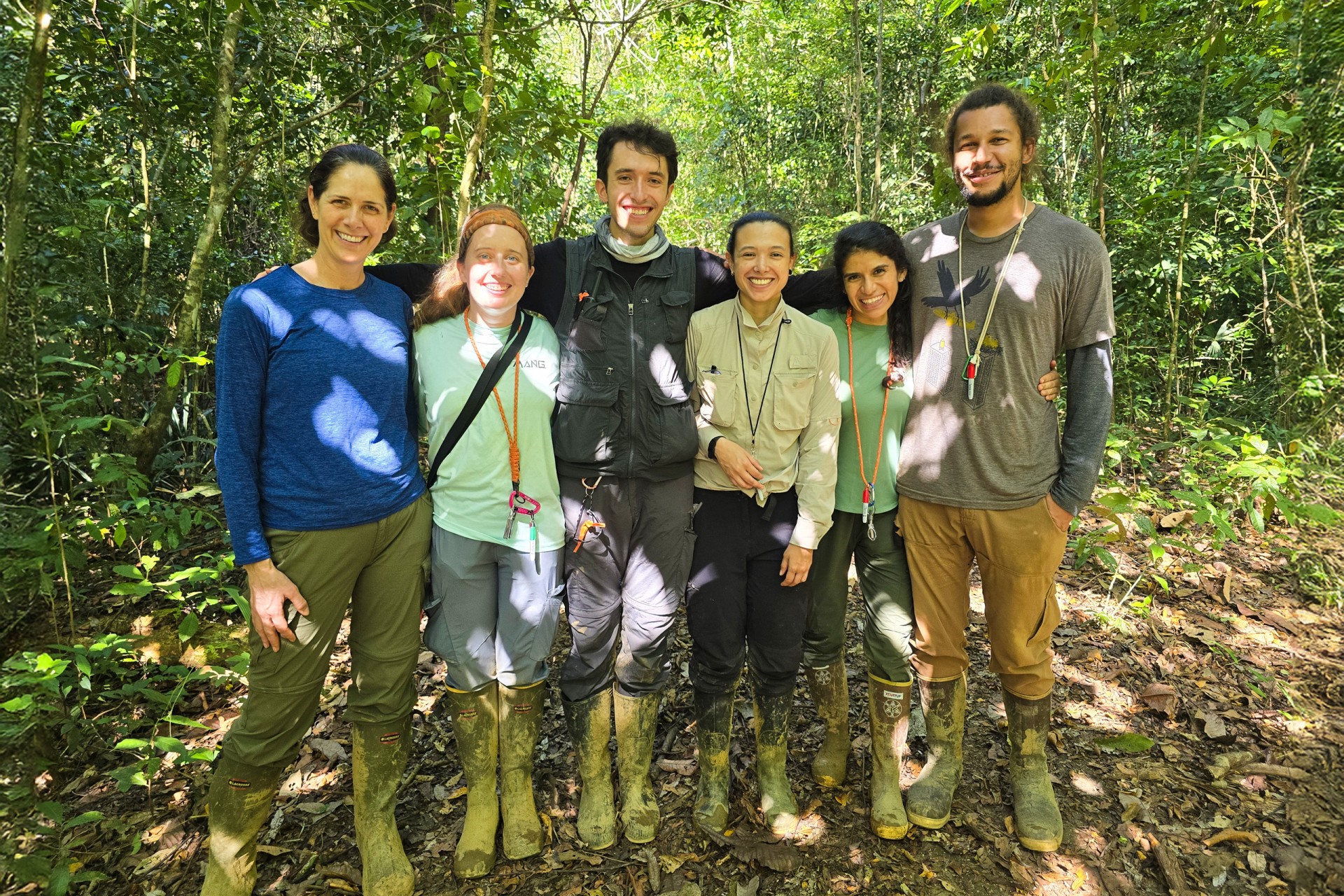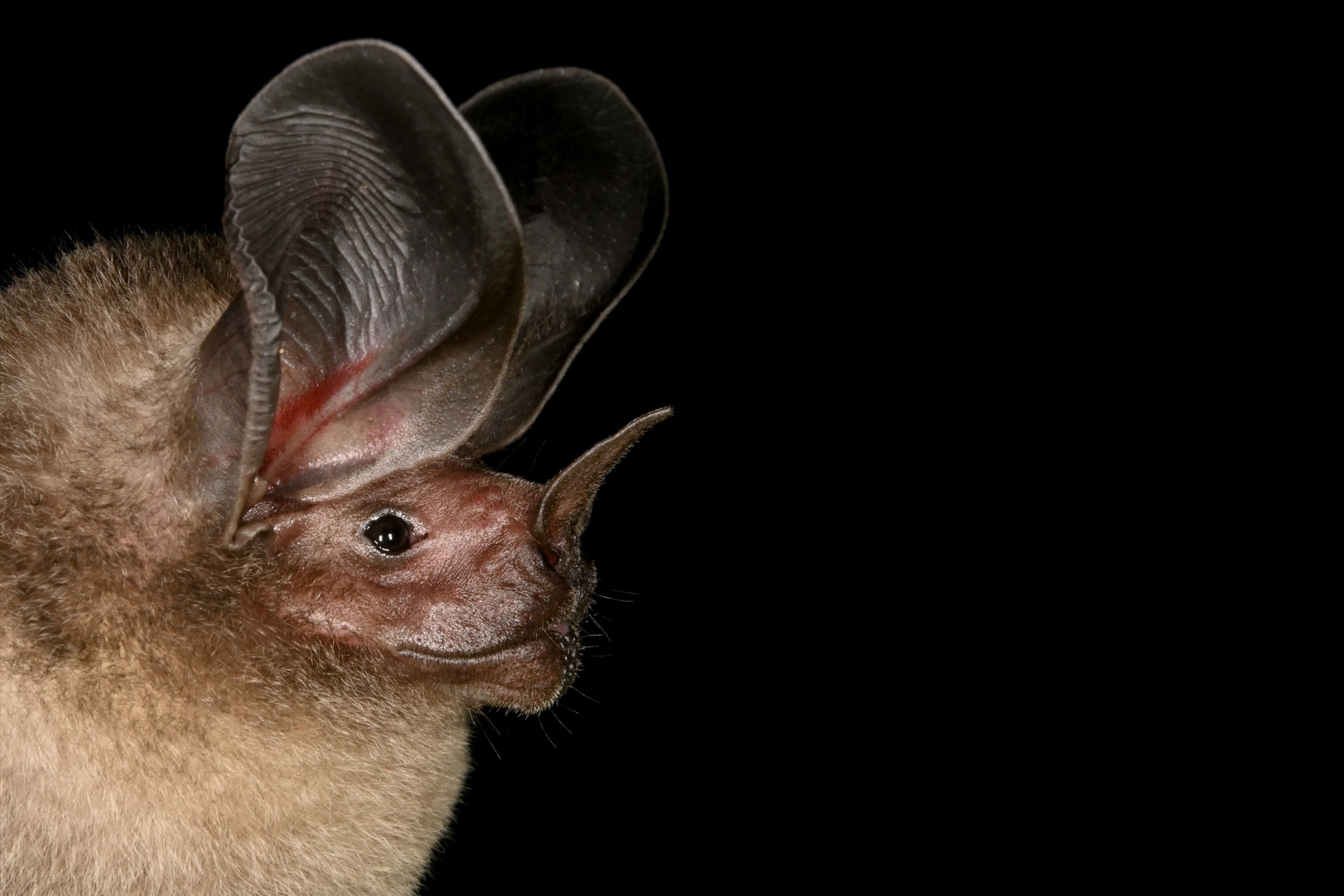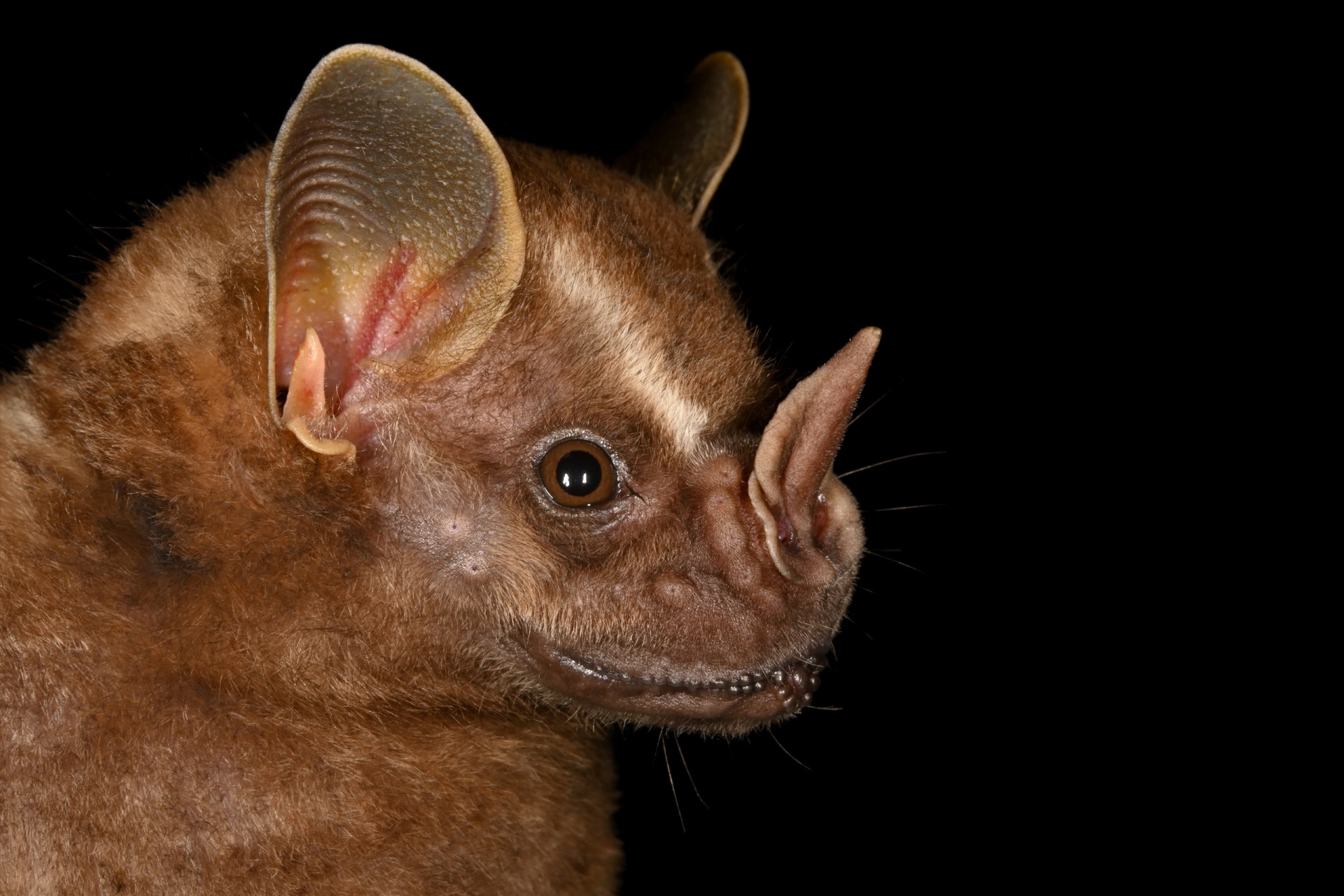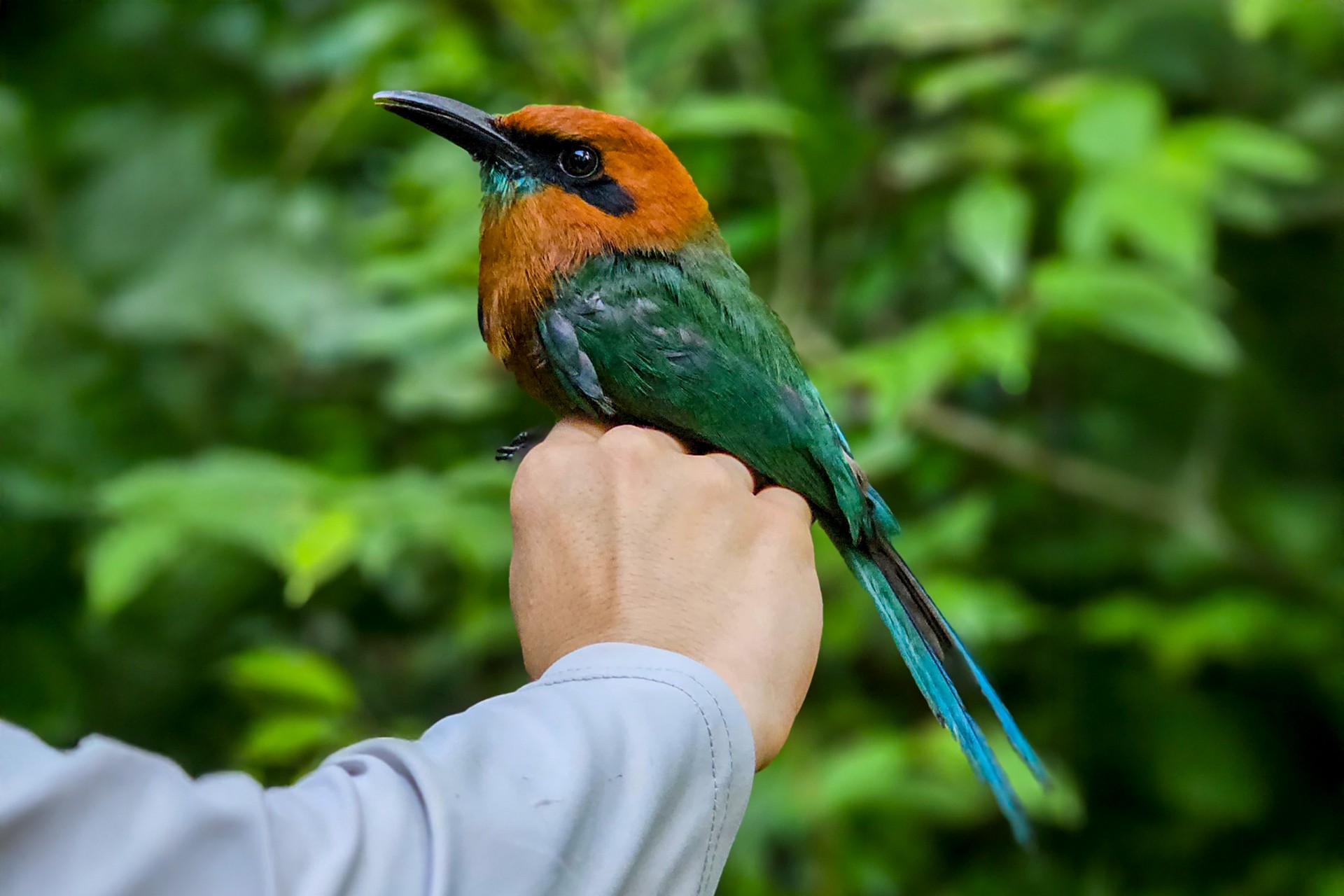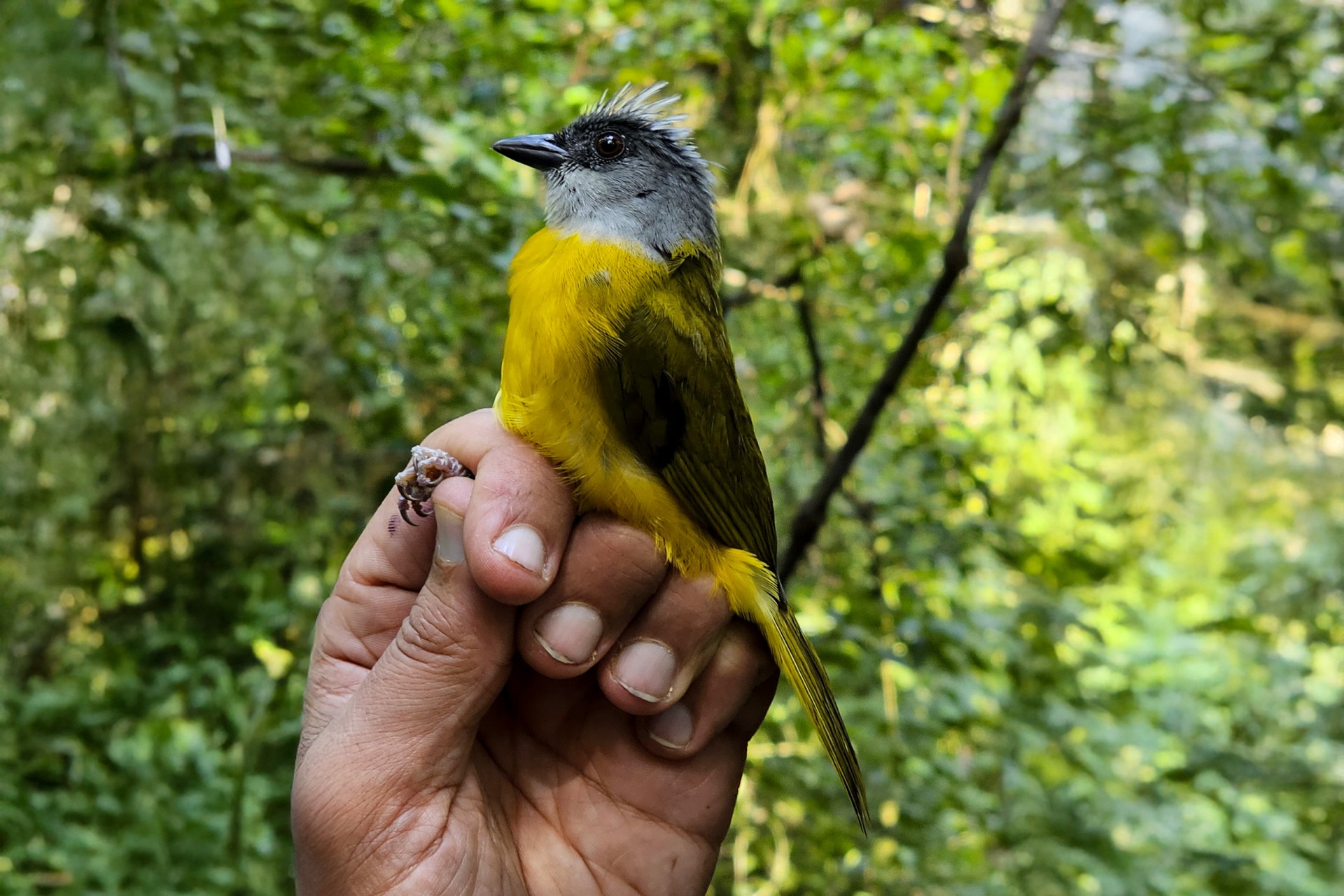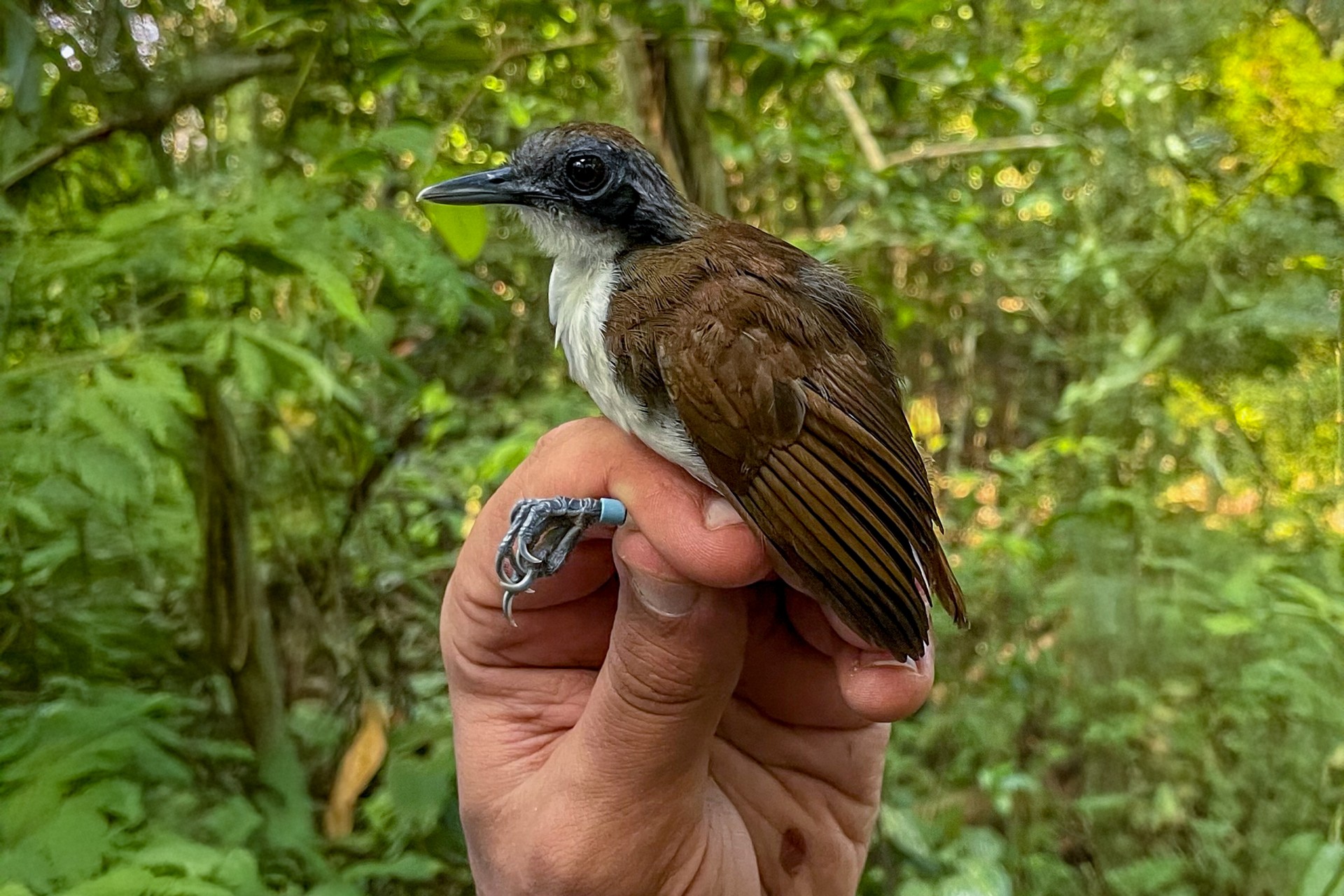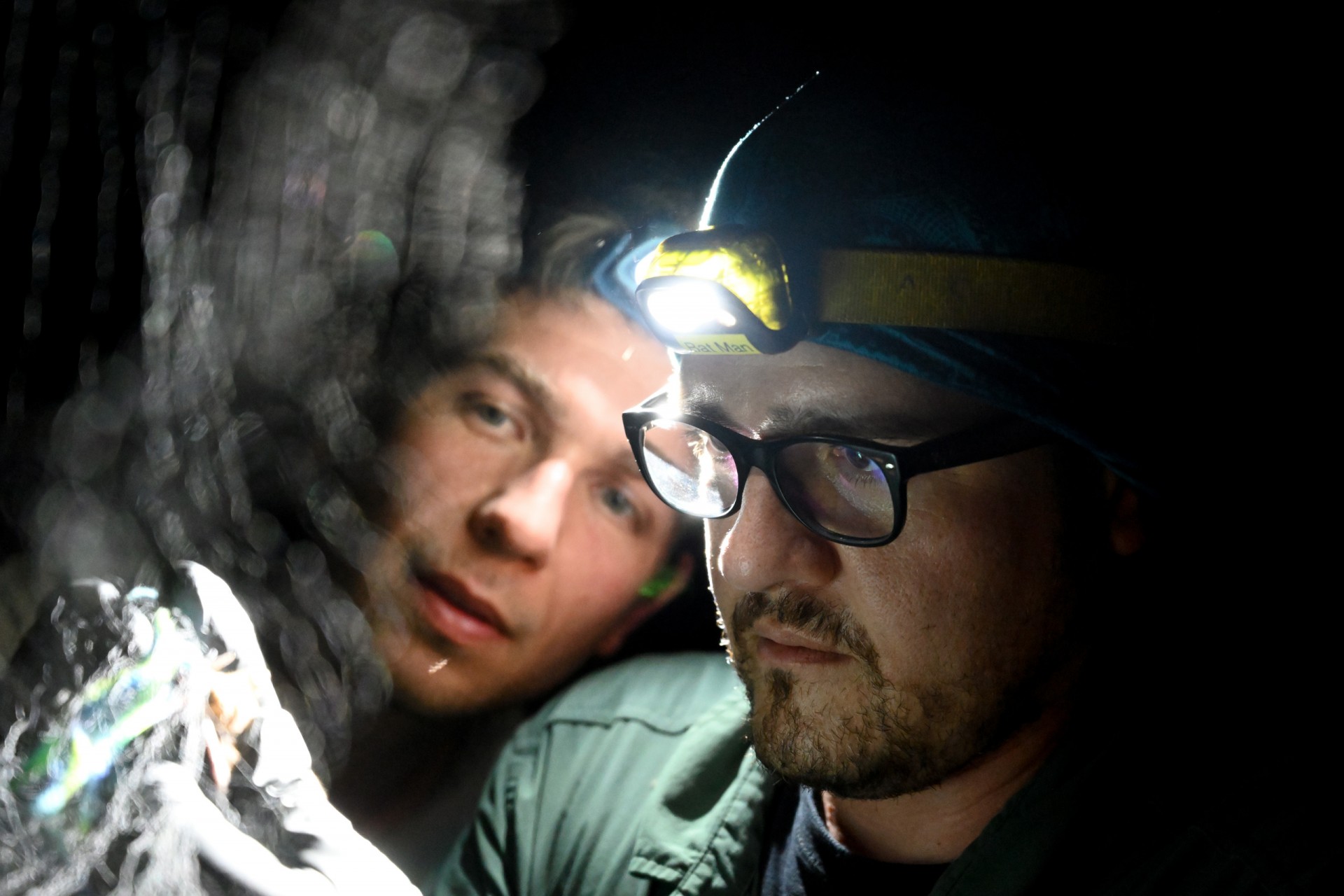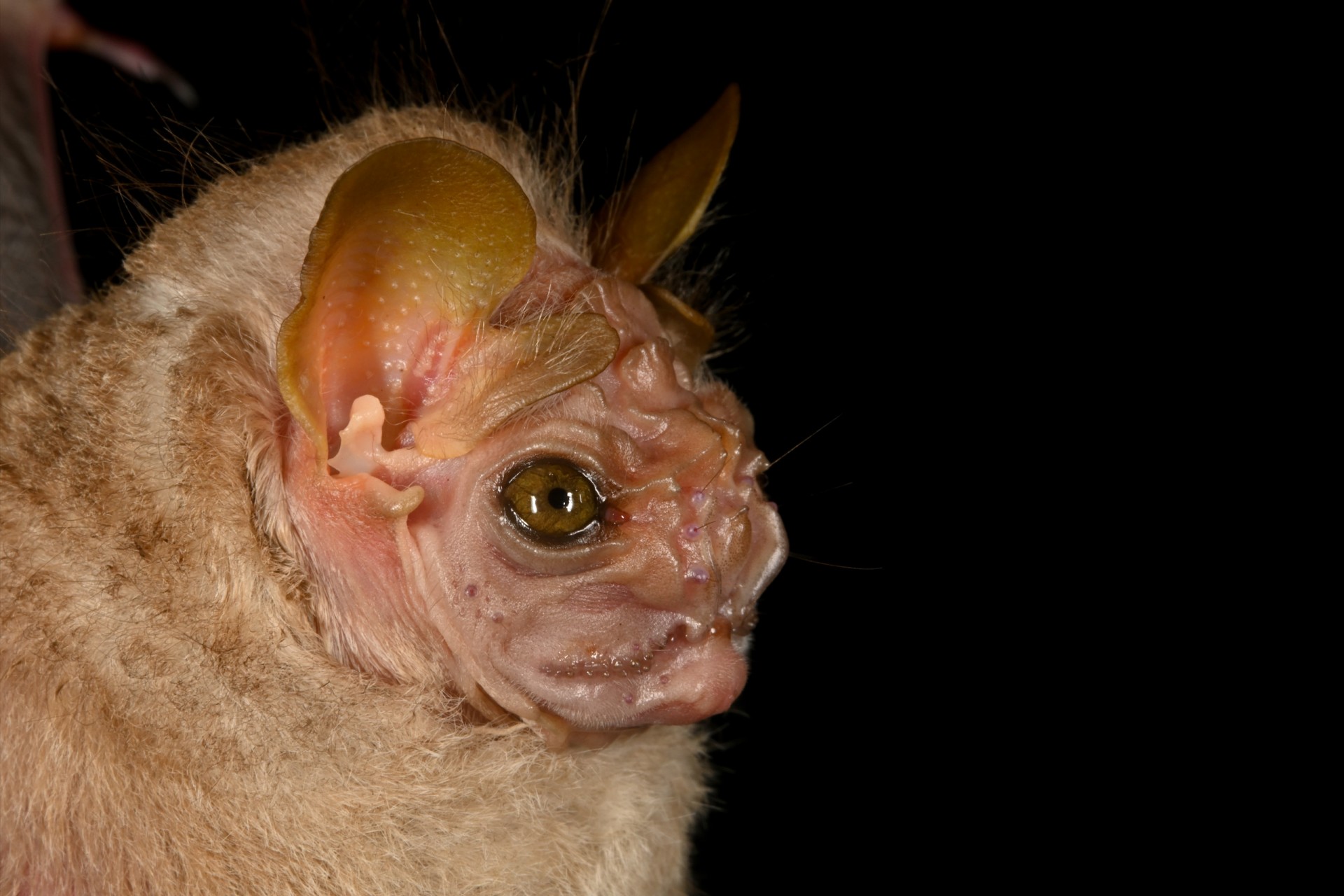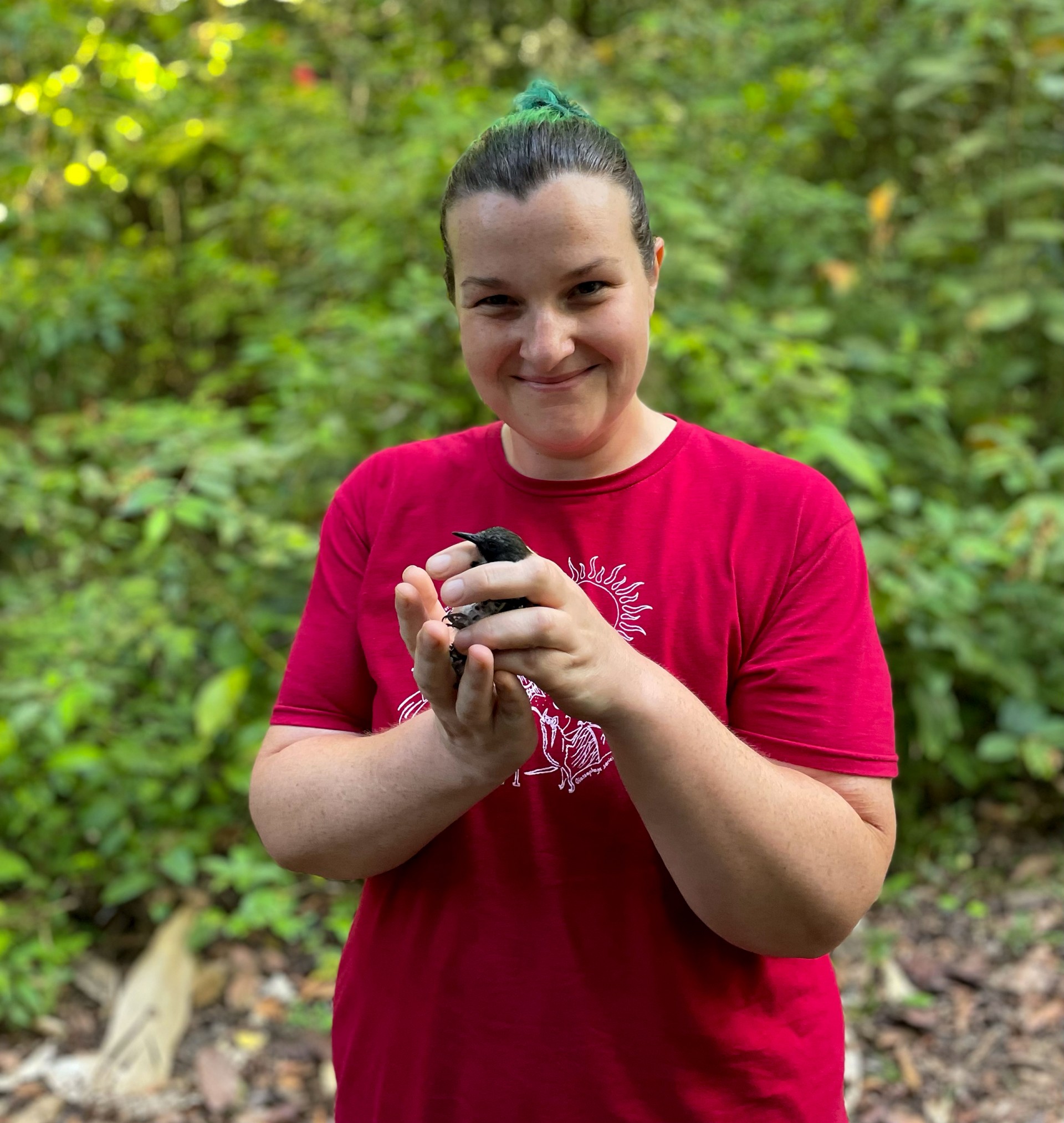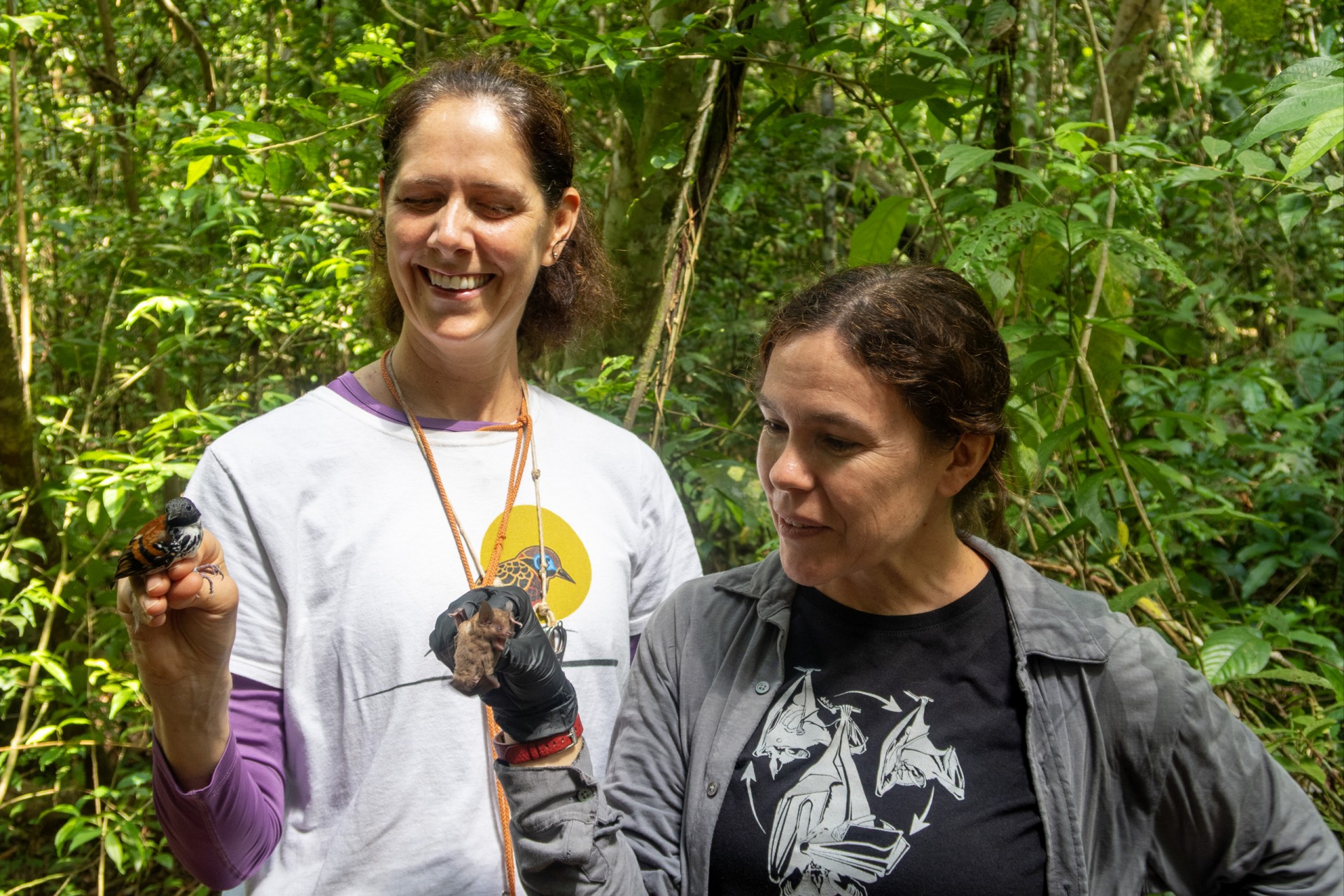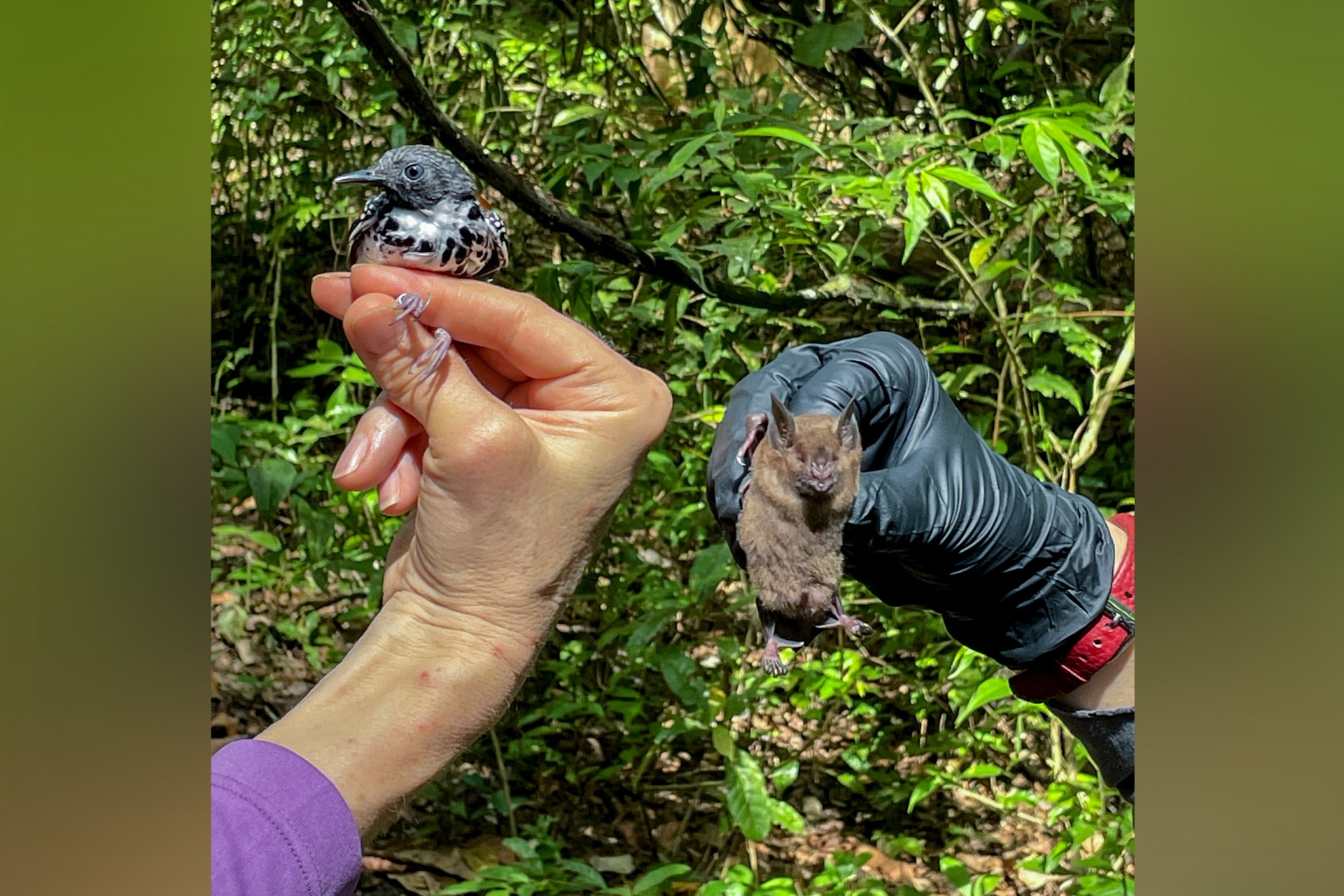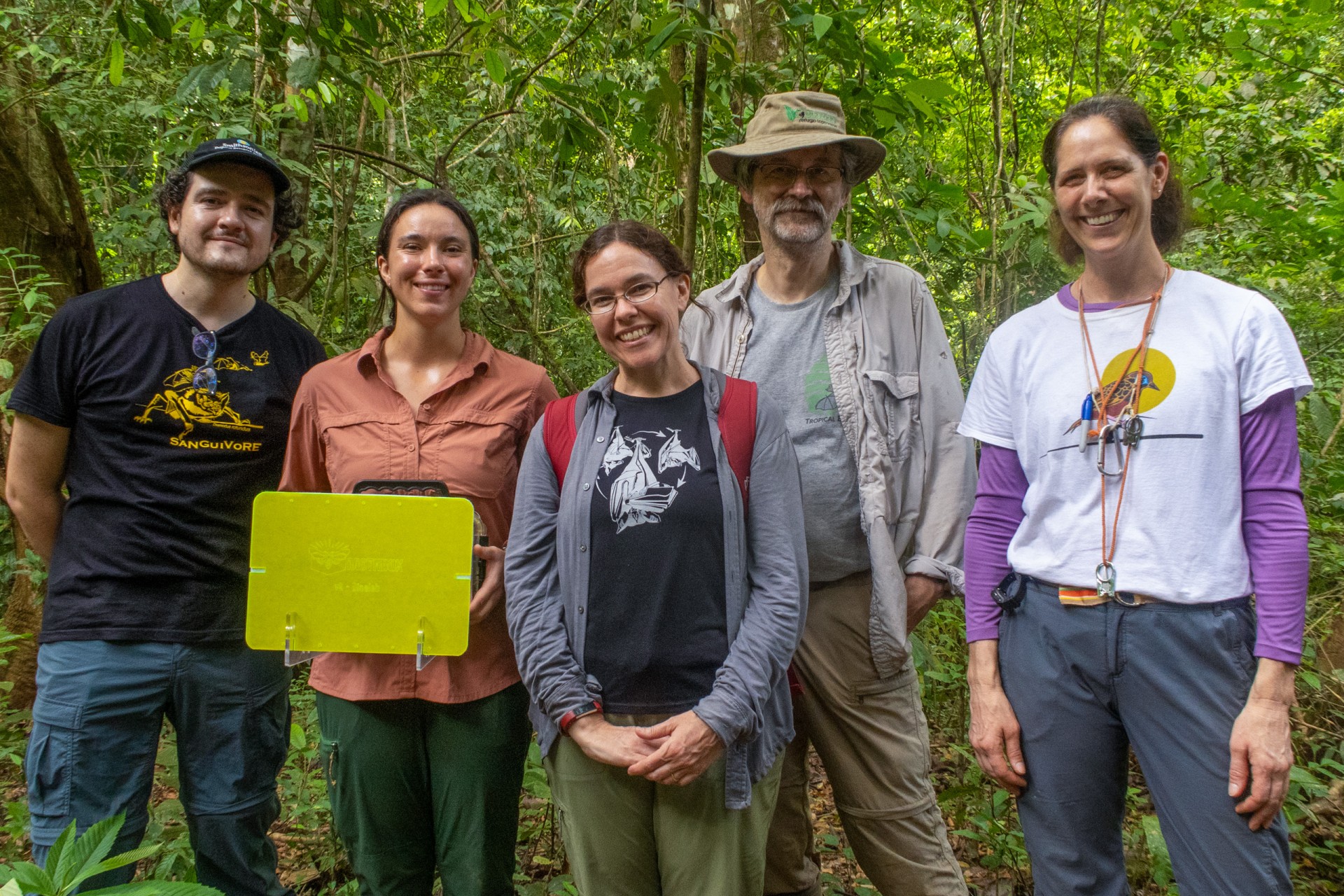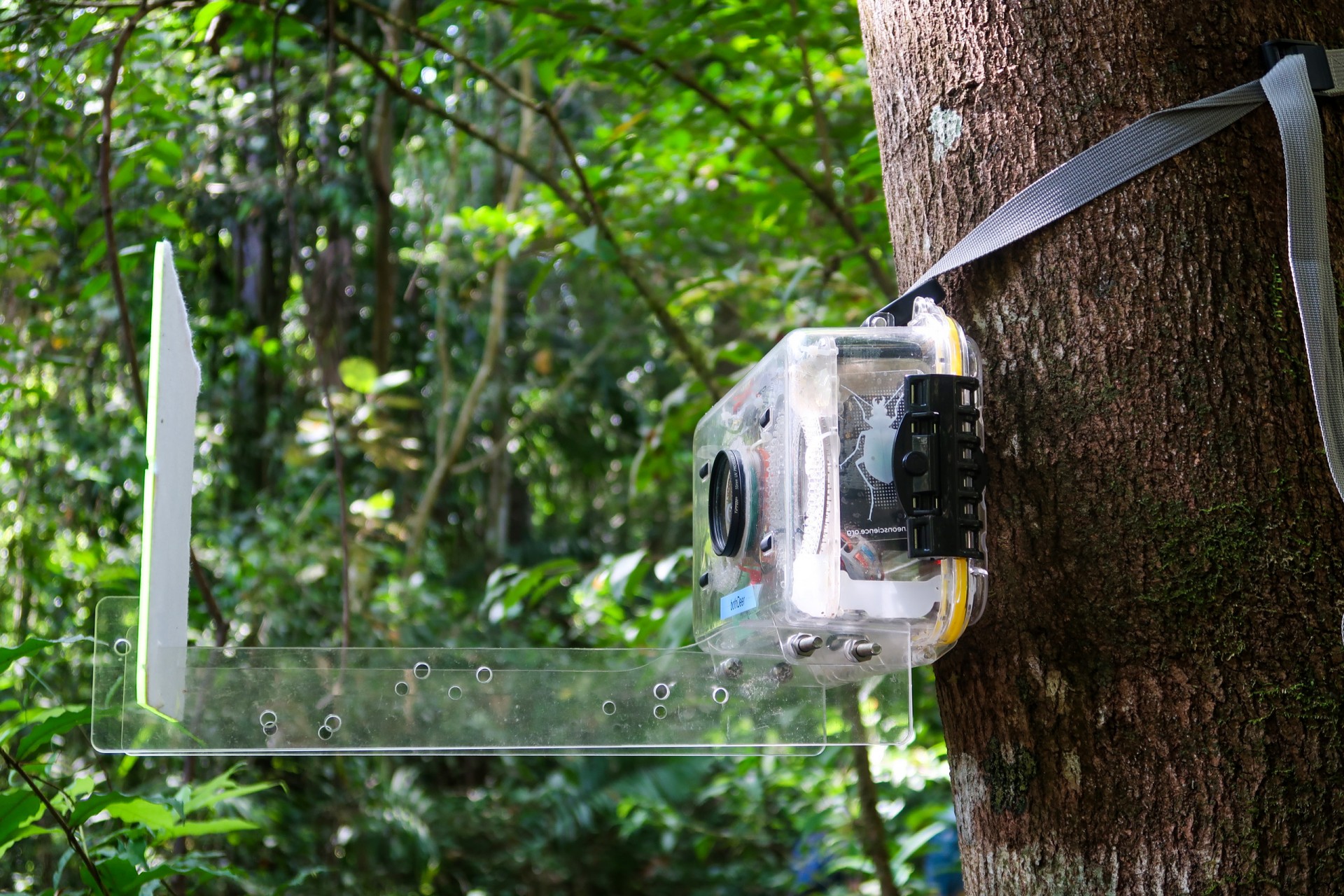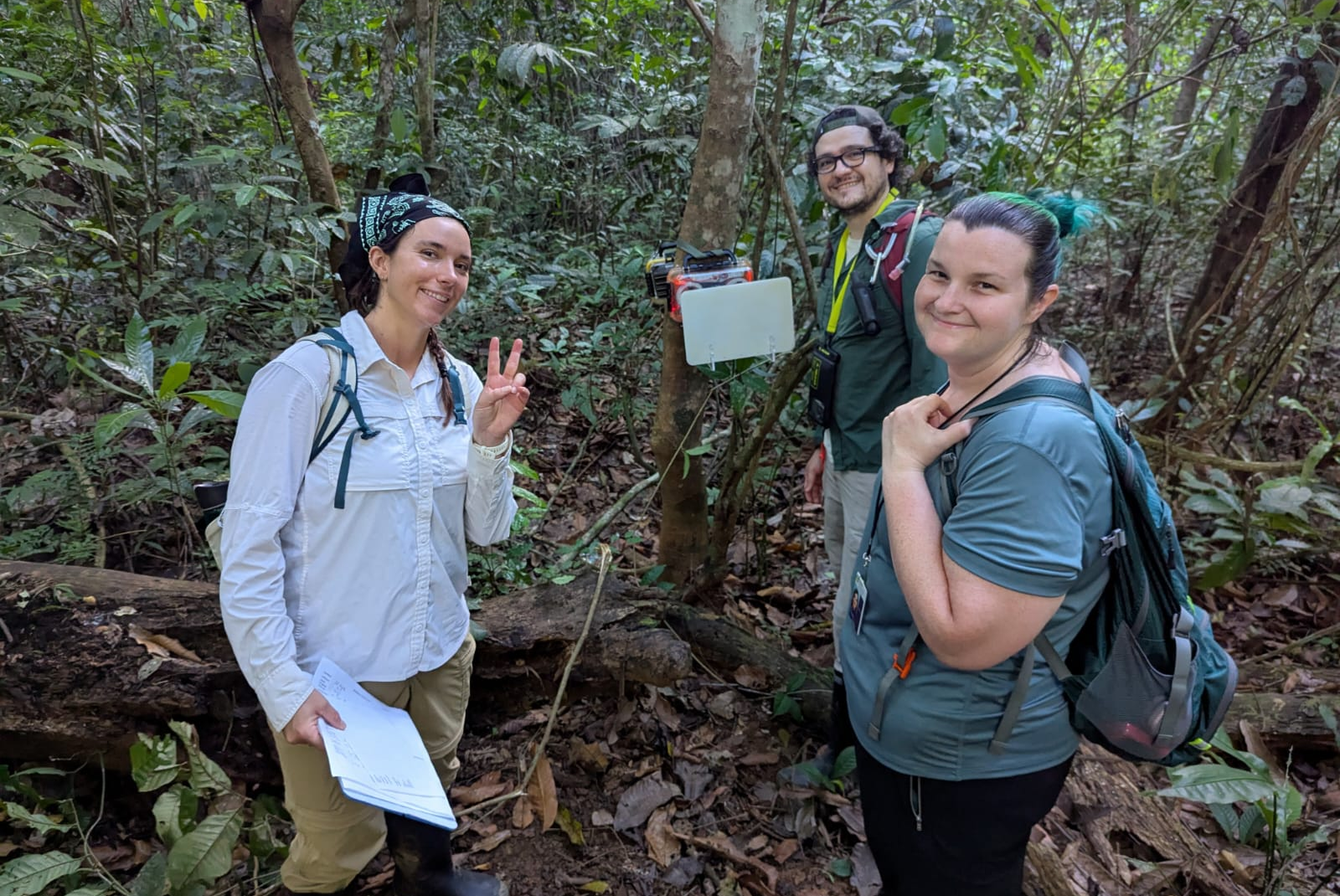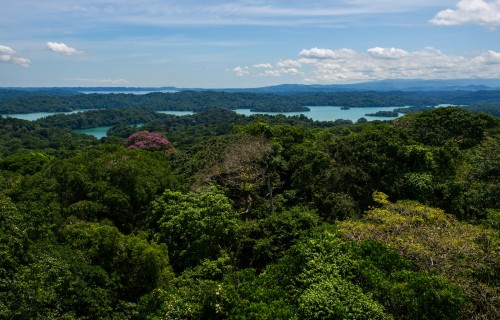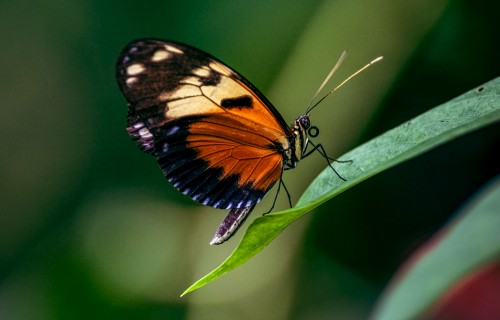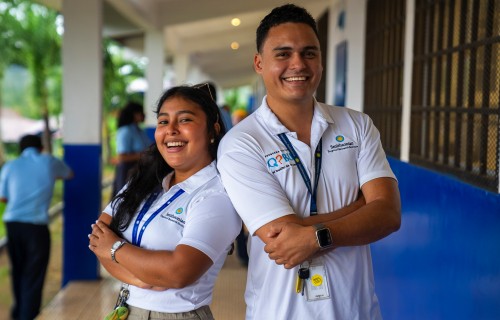Smithsonian science helps understand blue whale migratory and foraging patterns to inform conservation strategies
Bat/Bird
Census
Birds by Day, Bats by Night:
Long-Term Census of Bats
and Birds in Panama
Research teams studying bats and birds gather in Panama’s Soberanía National Park to celebrate the launch of a long-term census of bats designed to complement the bird census which will celebrate its 50th anniversary next year.
Early in the morning on Monday, March 10th, 2025, two groups of tropical biologists – the bat research team from the Smithsonian Tropical Research Institute (STRI) and the bird research team from the University of Wyoming – met on a muddy dirt road deep in Panama’s Soberanía National Park. They gathered to celebrate the start of an exciting new research project: a long-term biannual acoustic and mistnetting survey of Panama’s Neotropical bats (LongBAT). The new survey will take place twice a year – every dry and wet season - at three sites on Barro Colorado Island (BCI) and three sites on Pipeline Road. The Pipeline Road sites are in the Limbo plot and complement the long-term biannual bird census run by Corey Tarwater, a professor at the University of Wyoming and STRI Research Associate and her team, which celebrates its 50th anniversary next year.
Why study birds by day, bats by night? And why conduct the same surveys year after year for decades? As STRI staff scientist and the director of the Smithsonian Bat Lab, Rachel Page, explained, one of STRI’s key strengths is its long-term studies of tropical plants and animals. Without systematic long-term surveys, it’s hard to know if populations are changing, and if they are, when those changes occur, and if they are related to factors in the environment like severe weather events, changes in rainfall, or shifting temperatures.
“This biannual bat census will give us the power for all kinds of collaborative comparisons over time,” Rachel Page said. “We'll be able to look year after year at how changes in the environment and changes in other taxa affect bats, which are key players in tropical ecosystems.”
Bats will join the ranks of other well-monitored taxa that have been systematically surveyed at STRI for decades. The tree census that began on Barro Colorado Island (BCI) in 1980 is now one of 78 standardized studies in 29 countries around the world that are being used to understand how global change affects forests through the Forest Global Earth Observatory (ForestGEO) initiative. Barro Colorado Island also hosts long-term monitoring programs for insects, an initiative led by STRI scientist Yves Basset, as well as long-term studies of the populations of lizards, monkeys, ocelots, and more.
Birds were one of the very first groups of animals to be regularly monitored at STRI. Records go back nearly 100 years. Biannual censuses on Pipeline Road, a road parallel to the Panama Canal within Soberanía National Park, were started in 1977 by James Karr. This long-term research has shown that bird species are changing over time, with changes in the abundance and population growth of many species.
Camilo Calderón Acevedo, Colombian mammalogist and STRI postdoctoral fellow, leads the LongBAT project. He is currently working on Barro Colorado Island with veteran bat researcher Marco Tschapka, co-director of the long-term bat monitoring initiative, and his team from the University of Ulm in Germany. The team was excited to find among the first bats captured on BCI the wrinkle-faced bat (Centurio senex), a spectacular sight and one of the rarest species in the area.
One of the people attending the inaugural celebration on Pipeline Road was Erin Kennelly, James Karr’s granddaughter, who fell in love with Panama when she and her family visited during a symposium to celebrate 100 years of research on Barro Colorado in June 2024. She is now volunteering with several different groups at STRI—including the Smithsonian Bat Lab — as she thinks about how she could pivot her career as a data analyst to help better understand tropical ecosystems.
“My grandfather James Karr started this bird survey almost 50 years ago with several other scientists,” Erin Kennelly said, “It seems very full circle to experience something that he started.”
Erin Kennelly, James Karr’s granddaughter, participating in the biannual bird survey. James Karr started the biannual bird survey 49 years ago on Pipeline Road, Soberanía National Park, Panama.
Credit: Rosannette Quesada-Hidalgo
Even though bats have been a major research focus at STRI for nearly a century, most studies have targeted specific species or groups. To date, there has been no systematic, repeated monitoring effort of an entire bat community at STRI. So, inspired by the biannual bird census now led by Corey Tarwater, Rachel Page and long-term bat colleague and STRI Research Associate Marco Tschapka, decided to start a systematic bat survey, sampling the same field sites at the same times of year as the bird team.
The advantage of paired biannual surveys is practical and strategic. The bird team uses mistnets to sample the birds during the day, the bat team can use the same mistnet lanes to net bats during the night. Mirroring methods established by the bird team nearly half a century ago, the bat survey will be performed twice a year, once during the dry season in March, and once during the wet season in July. The bat survey will additionally include three field sites on Barro Colorado Island, to allow for island and mainland comparisons. To complement data from the mistnet captures, both the bat and bird teams will use acoustic monitoring to record bat echolocation calls and bird vocalizations. Aerial insectivores – bats that capture insects flying in the open air – are rarely caught in mistnets. But their echolocation calls are species-specific. The bat team can determine which species of aerial insectivores are flying in the area by analyzing their echolocation calls. Likewise, primarily only understory birds are captured in mistnets, but the whole community of birds can be captured by using their species-specific vocalizations.
Acoustic surveys will be coupled with data from MothBoxes designed by Digital Naturalism Laboratories (DinaLab). The MothBox is an open-source device that attracts nocturnal insects by LED light and automatically takes photographs at set intervals throughout the night. AI tools can then be used to identify and quantify the insects in the photographs, which will allow the bat team to quantify food resources for the bats. Brianna Johns, a Fulbright researcher with DinaLab, explains that MothBoxes are inexpensive, lightweight, and easy to use in the field, and have a battery that lasts for several days.
“We're really excited to collaborate with the bat team on this project,” Corey said, “By working with them, we can figure out whether or not bats are responding the same way to changes in climate that we're seeing with the birds. We are especially interested in whether we see similar responses between bats and birds that eat similar foods. For example, if we see that insectivorous bats are being impacted the most by changes in climate like we see for the birds, that adds support to the idea that their prey, the insects, are changing.”
By simultaneously studying bats and birds, researchers can monitor how these two groups—both of which have evolved flight and rely on similar resources, yet in distinct ways and at different times—respond to our changing environment. Such studies open the door to discovering new species and behaviors and play a crucial role in shaping future conservation strategies for tropical forests.
More information about past bat and bird surveys in Panama:
BATS
The following is a list of main efforts to assess the bat communities on Barro Colorado Island (BCI) and the surrounding areas. It is not a comprehensive list of all STRI bat projects.
• Frank Bonaccorso netted bats on BCI between 1972 and 1974, capturing nearly 3000 individuals across 35 different species. His focus was to investigate whether differences in food and habitat preferences and foraging techniques could promote coexistence among BCI’s many bat species.
• Charles O. Handley studied mammals in Panama from 1957 to 1992, and described a number of new bat species from the region. Between 1975 and 1986, he conducted a large mistnetting project on BCI, focusing on the Common Fruit Bat, Artibeus jamaicensis. During this 11 year period of intensive mistnetting, Handley and his teams captured nearly 50,000 bats from 56 species.
• After completing her dissertation at the University of Tübingen, Germany, former STRI staff scientist Elisabeth Kalko started a postdoc with Charles Handley. Together they published a comprehensive analysis of the BCI bat community. Kalko went on to conduct extensive research on bats on Barro Colorado Island. Kalko was one of the foremost experts on bats in Panama and spent significant time studying their behavior, foraging strategies, and social systems. Her work contributed to understanding how diverse bat species coexist in tropical ecosystems. In 2000 she was appointed a STRI staff scientist and was simultaneously offered the Chair of the Institute of Experimental Ecology at the University of Ulm, Germany. Several of the subsequent researchers listed here were her students.
• Dietrich von Staden was one of the first doctoral students of Elisabeth Kalko, while she was still working at the University of Tübingen. He conducted the first standardized bat capture efforts and compared bat communities between Pipeline Road and BCI. Initial captures took place in October 1995, with more regular data collection from May 1996 to March 1998.
• Christa Weise was a PhD student at the University of New Mexico, co-advised by Elisabeth Kalko. Between 2001 and 2004, Weise compared bat assemblages between the moist semi-deciduous forest on BCI and the wet evergreen forest of Fort Sherman. She also investigated the vertical stratification of bats on Barro Colorado Island.
• Christoph Meyer obtained his doctorate in 2007 with Elisabeth Kalko at the University of Ulm. He captured bats over two years bats on BCI, as well as on the peninsulas of the BCNM, and islands throughout Lake Gatun.
• Stefan Brändel and Thomas Hiller captured bats on Barro Colorado Island and the BCNM between October 2013 and October 2015 for their doctorates at the University of Ulm with Marco Tschapka. Their project was part of a coordinated effort to understand the effects of habitat fragmentation on common viruses that naturally occur in all vertebrate communities.
• Dilly Hoyt is a student of Ricardo Rocha at Oxford University, co-advised by Christoph Meyer and Rachel Page. In 2024 to 2025 she revisited the exact locations Christoph Meyer had sampled 20 years before. Her work allows for direct comparisons of bat assemblages over time.
BIRDS
Since Barro Colorado Island became a research station in 1923, many researchers have censused birds. Some of the noteworthy reviews of this work follow.
• 1929 Frank Chapman. My Tropical Air Castle. Listed about 200 bird species.
• 1930 Josselyn Van Tyne. The Barro Colorado Laboratory as a Station for Ornithological Research. The Wilson Bulletin.
• 1938 Frank Chapman. Life in an Air Castle. Listed 251 bird species.
• 1952 Eugene Eisenmann. Annotated List of Birds of Barro Colorado Island. Canal Zone. Listed 306 species.
• 1974. E.O. Willis. Populations and Local Extinctions of Birds on Barro Colorado Island. 45 species of birds disappeared from the island. This study was one of the first to make people realize that to conserve birds, large, interconnected reserves were preferable to isolated islands of forest.
• 1979 E.O. Willis and Eugene Eisenmann. A Revised List of Birds of Barro Colorado Island, Panama. Lists 366 species of birds reported from the island.
• 1982. James R. Karr. Avian Extinction on Barro Colorado Island, a reassessment.
• 1999. W. Douglas Robinson. Long-Term Changes in the Avifauna of Barro Colorado Island, Panama, A Tropical Forest Isolate. 65 bird species disappeared from Barro Colorado Island.
• 2021. J. R. Curtis et al. Erosion of tropical bird diversity over a century is influenced by abundance, diet and subtle climatic tolerances. Reported 27 percent loss of birds from Barro Colorado Island.
The Pipeline Road bird survey began in 1977. This survey has been conducted every year since, with the exception of one year - in 1991 after the U.S. invasion of Panama. So 2026 will be the 50th year of this long-term bird monitoring project. There were 4 years when it was not done in the dry season. The researchers who led this survey were James Karr, Jeff Brawn, and Corey Tarwater.
• 1976. James R. Karr. Seasonality, resource availability, and community diversity in tropical bird communities.
• 1983. James R. Karr and Freemark. Habitat selection and environmental gradients: Dynamics in the “stable” tropics.
• 2000. W. Douglas Robinson et al. Forest bird community structure in Central Panama: influence of spatial scale and biogeography
• 2011. Corey Tarwater et al. Pre-reproductive survival in a tropical bird and its implications for avian life histories.
• 2017. Jeffrey D. Brawn et al. Impacts of changing rainfall regime on the demography of tropical birds.
• 2022 Henry S. Pollock et al. Long-term monitoring reveals widespread and severe declines of understory birds in a protected Neotropical forest. Over 44 years of the survey, about 70 % of the species declined, whereas only a very few increased. Many of the species that declined lost more than 50 percent of their original estimated abundances. These declines within a large protected area suggest regional or even global factors may be affecting the birds.
• 2024 Rebecca C. Wilcox et al. Observed declines in body size have differential effects on survival and recruitment, but no effect on population growth in tropical birds. By studying 51 bird species over three decades, researchers found that body condidtion has declined in 88% of species, while structural size has not significantly changed. Results suggest that nutritional stress is likely the causes of changes in body size. Adult survival and recruitment of species were impacted by body size, but population growth appears buffered from these changes.
• 2024. Henry S. Pollock et al. Long-term monitoring reveals the long lifespans of Neotropical forest landbirds.

